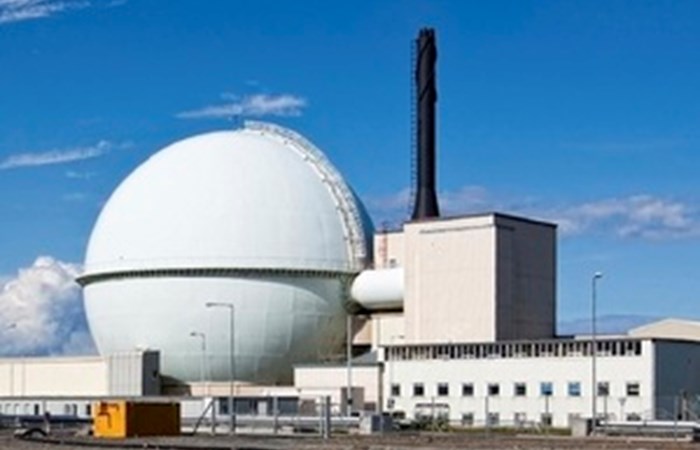Nuclear Decommissioning Authority

Work is under way to retrieve the last remaining radioactive fuel elements that have been stuck for decades inside the iconic Dounreay Fast Reactor (DFR).
The experimental dome-shaped nuclear reactor once led the world in fast breeder technology and after it closed in 1977 most of the core fuel was removed. But work to remove elements from the breeder zone came to a halt when some were found to be swollen and jammed. Almost 1,000 around two-thirds of the total - were left in place.
Decommissioning the 58-year-old reactor is one of the most technically challenging projects in the Nuclear Decommissioning Authority (NDA) estate and removing the breeder elements has been a top priority.Now, after many years of designing and testing remotely-operated equipment, a decommissioning team has started to recover the elements.
It is expected to take around 3 years to remove them all, after which work can begin on the final dismantling of the landmark reactor.
NDA Chief Executive David Peattie welcomed the news:
Dealing with this material is one of the highest priorities anywhere for the NDA, not just at Dounreay but across our UK sites.
The safe and timely retrieval of the breeder material is crucial to both the sites closure programme and the national defueling programme.
I am very pleased with this achievement which is a great example of how the Dounreay team and the NDA can work together to deliver results of national importance.
Ron Hibbert, Senior Project Manager at Dounreay Site Restoration Limited (DSRL), the company carrying out the work for the NDA, added:
Reaching this important stage has been a huge achievement by the project team. Emptying the reactor vessel of this material is one of the biggest engineering challenges we face in decommissioning the site and its a great moment for DSRL and our contractors to see their hard work pay off.
DFR was built in the 1950s at a time when there was a worldwide shortage of uranium for electricity generation. Its core was surrounded by a blanket of natural uranium elements that, when exposed to the effects of the radiation, would breed to create a new fuel, plutonium. UK experimentation with fast breeders came to an end in the 1990s.

During a recent visit to the reactor, Jamie Stone, Member of Parliament for Caithness, Sutherland and Easter Ross, said:
Actually watching on screen the removal of an element from the reactor core was fascinating. Seeing the intricate techniques and skills, and the special locally designed equipment being used was absolutely inspirational.
In an age when sometimes you begin to wonder where British technology is going, it is hugely encouraging to see what is being done at Dounreay. I take my hat off to the workforce.
When the damaged elements were discovered, decommissioning effectively stopped for 20 years, until the decision was taken in 2000 to close down Dounreay and the creation of the NDA a few years later gave fresh momentum to the task.
The elements were immersed in some 57 tonnes of highly reactive liquid metal which had to be removed and destroyed before remotely-operated cameras could inspect the condition of the material. This programme took more than 10 years.
Now, following extensive research and development trials inside the plant and at a test rig on the outskirts of Thurso, work has started to remove the remaining breeder material.
Watch the DFR breeder material removal process
Dounreay Fast Reactor
-
The material is being removed from the reactor and transferred to the purpose-built breeder containment building, where they are being cut open to remove the uranium fuel slugs, cleansed of any traces of liquid metal, and packaged in robust containers ready to be transported to Sellafield. About 40 tonnes of breeder recovered previously has already been sent there.
-
Built in the 1950s, the DFR became the worlds first fast reactor to provide electricity to the National Grid in 1962. Its 60MW output was enough to power a small town like Thurso. It closed in 1977.
Dounreay Site Restoration Ltd (DSRL)
- DSRL, a company owned by Cavendish Dounreay Partnership, is responsible for decommissioning the UKs former centre of fast reactor research on behalf of the NDA.
